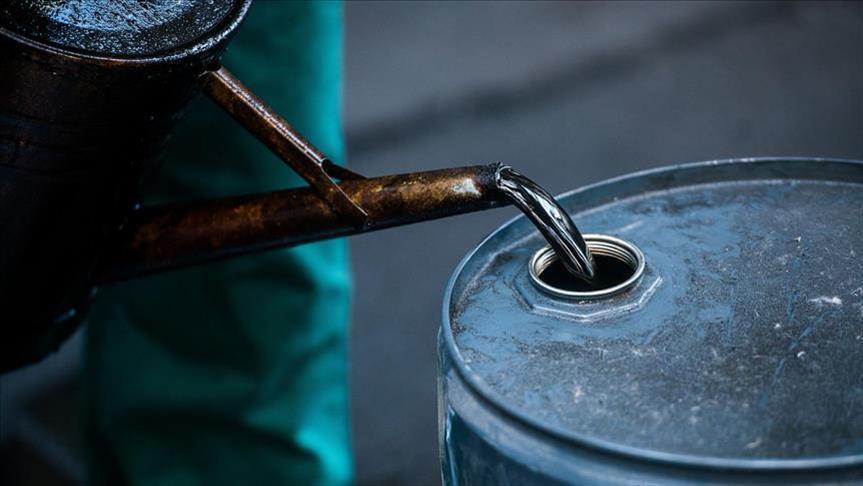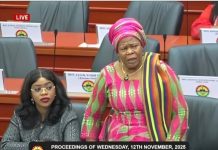As at today, the average price of gasoline (Petrol) around the world is 1.29 U.S. Dollar per litre according to globalpetrolprices.com. Nonetheless, there is significant variation in these prices among countries.
As a universal rule, richer countries have higher prices while poorer countries and the countries that produce and export oil have significantly lower prices.
One notable exception is the U.S. The variation in prices across countries are due to the various taxes and subsidies for gasoline.
All countries have access to the same petroleum prices of international markets but then decide to impose different taxes.
Today’s exigency for cheaper fuel prices in Ghana makes it more imperative to look at the level of government interventions with regard to the imposed taxes and levies and as well as the proper application of the Energy Sector Levies Act, 2015 (Act 899).
The degree of government or state intervention in the energy markets differs significantly across countries and also determines whether the market is regulated or deregulated (Liberalized).
Although each country has specific fuel market characteristics, there are various forms of fuel market organization and methods of fuel pricing.
Preferably, regarding validated best practices in the energy markets, three main methods for retail fuel pricing standout for me;
- The Price Ceiling Approach
- The Market-determined Approach
- The Fixed Price Approach

Price ceiling: Under this form of price regulation, fuel retailers are free to determine their selling prices as long as they do not exceed the specified ceiling. The government influences retail fuel prices by setting maximum prices for petroleum products, which are revised regularly. The purpose of this form of price control is to protect consumers from sudden upward price fluctuations or unreasonably high market prices.
Market-determined retail fuel prices: This pricing type is typical for liberalized fuel markets. In countries with such markets, the state intervention is limited to establishing terms and conditions that promote market transparency and free competition.
Fuel retailers set their selling prices freely without major restrictions. Therefore, the fuel prices at different stations and in different regions of the country could vary.
Fixed price: The most extreme form of price control is when the government or another authorized institution fixes the retail fuel prices. All retailers must sell their fuels at exactly these prices.
According to the 97 reviewed countries fuel markets by Global Petrol Prices, 60% of these fuel markets are deregulated (liberalized) and the retail fuel prices are market-determined. In the remaining 40% of the countries, the government is involved in the retail fuel pricing (regulated) with a price ceiling or a fixed price.
To fully appreciate and understand the dynamics and politics of fuel pricing, it’s important to know the supply chain of getting the fuel to the consumer. In brief, Oil Refineries buy or extract crude like WTI Crude and convert these crudes into petrol, diesel, Aviation turbine fuel, Biofuels, etc.
Oil Marketing Companies (OMCs) then market the converted crudes (petrol, diesel, etc.) to dealers and ultimately to users (consumers). Dealers are the People who are engaged in the business of buying fuels from OMCs and distributing them to users. They are distributors of fuel.
Fuel prices in Ghana are deregulated. In a deregulated market, it is important to highlight that consumers of petroleum products are price takers. Thus, they do not control the three key variables that significantly influence petroleum prices in Ghana; global crude oil prices, the foreign exchange rate and the taxes and levies imposed on petroleum products.
Several variables determine the final price build-up, some of which are beyond the control of the regulator (National Petroleum Authority), importers, and Oil Marketing Companies (OMCs).
In summary, fuel pricing in Ghana is made up of three predominant factors. These are:
- World market price: all the cost that goes into shipping, landing, and discharging of the imported product and all other cost incurred by the importer are added to the world price before it is sold to the OMCs locally. Both the importer and the OMCs will also add their margins to make some profit.
- Exchange Rate: Because the fuel is imported, the exchange rate plays a major role in the price build-up. The importers purchase the product in dollars, and thus, the performance of the cedi against the dollar informs how much cedis the importers would need to purchase a certain quantity. This invariably has a bearing on how much cedis the local OMCs would need to purchase the product from the importer – and that also informs how much the fuel would be sold at the pumps.
- Taxes, Levies & Margins: Currently, the Government of Ghana has imposed different taxes and levies on petroleum products, which also determines the price of fuel in the country. An assessment of the current price build-up indicates that for every litre of petrol, there is a tax component constituting about 40 per cent of the total price build-up. The taxes and levies include Energy Debt Recovery Levy, Road Fund Levy, Energy Fund Levy, Price Stabilisation and Recovery Levy (PSRL), Sanitation and Pollution Levy, Energy Sector Recovery Levy, UPPF, Special Petroleum Tax and Primary Distribution Margin. The rest are BOST Margin, Fuel Marking Margin, Marketers’ Margin, and Dealers (Retailers/Operators) Margin,
I do admit that taxes including those imposed on the petroleum product are the main source of revenue for the government and that proceeds from the tax collection are used to undertake government policies and to meet expenditure and other budgetary requirements but today’s exigency for cheaper fuel price in Ghana makes it more imperative to look at the level of government interventions with regard to the imposed taxes and levies and well as the proper application of the Energy Sector Levies Act, 2015 (Act 899).
More surprisingly, the Price Stabilization and Recovery Levy (PSRL) which was established in 2015 under the Energy Sector Levies Act, 2015 (Act 899) prescribes the purpose of the levy to be that:
5. (1) The Minister shall cause to be opened and maintained an account to be known as the Price Stabilization and Recovery Account for the purpose of receiving moneys realized from the Price Stabilization and Recovery Levy.
(2) Moneys in the Price Stabilization and Recovery Account shall be used
(a) as a buffer for under-recoveries in the petroleum sector;
(b) to stabilize petroleum prices for consumers; and
(c) to subsidize premix and residual fuel oil.
For policy credibility, the utilization of the accumulated balance of the PSRL is what is required to cushion consumers in this high oil price period.
Between 2016 and 2019, consumers of petroleum products paid GHp12 per litre on petrol, GHp10 per litre on diesel, and GHp10 per kilogram as PSRL. The levy was adjusted upwards in 2019 to GHp16 per litre on petrol, GHp14 per litre on diesel, and GHp14 per kilogram on LPG. The adjustments took effect in 2020.
Based on consumption data of petroleum products between 2016 and a half year of 2021, the PSRL is estimated to have cumulatively raised about GHS2.53 billion, out of which an average of 50 percent is estimated as subsidies for premix fuel and RFO. Adjusting for 25 percent non-collection rate or theft by some Oil Marketing Companies (OMCs), the PSRL is estimated to have cumulatively raised about GHS1.89 billion.
Out of this amount, about GHS948 million is expected to have been cumulatively spent on subsidies, leaving about GHS948 million as the balance of the account, given that levy has never been used to stabilize prices since it was imposed in 2015.
A Press Release from the National Petroleum Authority (NPA) dated Monday, 11th October 2021, announcing the decision to zero the Price Stabilization and Recovery Levy on petrol, diesel, and LPG for two months is thoughtful but can’t be the best solution, especially regarding its established purpose as enacted in the Energy Sector Levies Act.
With respect to the assessment of the Energy Markets in Ghana and from the foregoing, it would only be proactive for our policymakers to consider these recommendations;
Short Term;
These short terms recommendations are very necessary to curb the ongoing impact of fuel price hikes on the cost of transport fare, food items and other essential materials consumed by the majority of Ghanaians.
- Knowing that the application of the PSRL as established by law does not require Parliamentary approval, Government must be more concern to immediately apply the estimated accumulated balance of GHS948 million in the PSRL Account to cushion petroleum consumers. This can be done in many ways but preferably, GoG can for a period of 6 -12 months cushion every consumer by 25% discount of the cost of every 1litre of fuel at the pump. For Example, if 1 litre of petrol is GHc8 at the pump, the cushion effect of the PSRL will make us pay GHc6 per litre.
- Government of Ghana must take steps to review some of the margins, taxes, and levies regime for petroleum products to eliminate those that have outlived their usefulness. Specifically, (a) The Unified Petroleum Price Fund (UPPF) margin which was to ensure parity in prices regardless of cost differential incurred due to location should be eliminated for now. (b)The Fuel Marking Margin which was to pay for the marking of petroleum products to prevent tax revenue loss, smuggling, adulteration of petroleum products can as well be taken off. (c) BOST margin which was to be used to cover the maintenance and operating cost of petroleum product depots and to undertake expansion programs of the depot should be reduced by 50%. (d)
Long Term;
- Oil refinery infrastructure Investment: the malfunctioning of the Tema Oil Refinery (TOR), which was intended to boost local capacity, has intensified the country’s dependency on the international market. Currently, a chunk of all petroleum products in the country are imported. Having a refinery that is able to buy from the locally produced crude oil in Ghana and also able to meet the demands of OMCs in Ghana will drastically change our fuel price narrative. Thus the cost related to the exchange rate and the World Oil price will be reduced or eliminated. Proper Investment and restructuring of TOR will provide solution to most of the problems in the energy market that is beyond our control.
- Hybrid Fuel Pricing Model: We must begin to think outside the box and design a pricing model that will fairly give a cushion that is more balanced. This model will be a combination of the 3 types of fuel price model as discussed above.
- Enact Policy that encourage the manufacturing and/or importation of Hybrid Cars. Hybrid cars are more fuel efficient and depends on both fuel (50%) and hybrid Electric battery (50%). They more environmental friendly. Import Duty for such cars must be reduced by 50%.
(Data Source: NPA, Global Petrol Prices, ACEP)















































